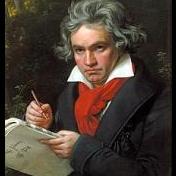Leaderboard
Popular Content
Showing content with the highest reputation on 01/28/2023 in all areas
-
So as @Henry Ng Tsz Kiu and @Thatguy v2.0 had asked about before, I decided to sort of try getting back into doing music for more stuff. I started with compiling some of the Castlevania inspired tunes I did over the last two years, remixing and editing some of them into loops and now it just went up on the GameDevMarket (Unreal and Unity stores soon to follow). We'll see how it does. Anyway, thanks for your support guys. I have some packages of 20th-Century Style adventure movie music and 80s stuff in the works too, of course, some tracks are just standalone pieces and I'll be sure to post them on the forums like always.2 points
-
Hi The crab canon (cancrizans in Latin, cangrejo in Spanish) is know (wiipedia) as well as "retrograde canon, canon per recte et retro or canon per rectus et inversus)... is an arrangement of two musical lines that are complementary and backward. If the two lines were placed next to each other (as opposed to stacked), the lines would form something conceptually similar to a pallindrome. The name 'crab' refers to the fact that crabs are known to walk backward (although they can also walk forward and sideways). The most famous crab canon is the one Bach wrote for the Musical Offering. There are no many canon of this type, because it is more an exercise. It has its difficulty. The crab canon harmonizes one melodic line with itself in retrograde. So, you have to write a double (invertible) counterpoint, taking care of the fifth interval, because once inverted it becomes a dissonant fourth. So, fifths should be treated as dissonances. I have written, with time, some crab canon, just for fun and as a counterpoint exercise. But I had a concern with the possibility of writing a double crab canon. That is to say: two crab canon which can sound together. I have not seen any methods to to this. But I developed my own. I wrote a simple cancrizans 6 + 6 measures. Afterwards I wrote. second one in a lower register, having in mind the first. Third, I put both canon together. Fourth, I wrote the result with all the lines in retrograde. I think more combinations are possible, but taking care of the intervals. At least, it was fun. I'll keep this piece... Perhaps I use it in a larger format as a part of an orchestral work.1 point
-
funny you say that. I always think of composing as if I were creating a person. I wouldn't start with the head, adding eyes ears and hair, scars on the skin. I would create the skeleton, then the muscles, etc. probably kinda weird analogy lol1 point
-
Thank you @Henry Ng Tsz Kiu for your always so generous comments. I am fully persuaded that the second movement needs some fixing. I'll try and make the initial part more interesting somehow, variating rhythms etc. I too like the fourth movement the best 🙂 so I tried to turn it into an orchestral piece, I attach it here!1 point
-
I use here my "knowledge" about schemata and other resources I am learning (musical rhetorics). This is not a baroque o or exactly galant style. It's music inspired in it and using its stuff. The first part is a Fanfare in format AABBA (binary). The second takes the form of a ritornello. There's no third part, I don't want to write it.1 point
-
Very beautiful, I particularly enjoy the opening of the Adagietto. Some harmonic tensions are very powerful, and many solutions sound so good. Wish I had more in depth comments to make!1 point
-
Thanks for listening. Let's see...... with 4 voices, or more, it's quite difficult to avoid all those parallels. What I have in mind is avoiding that between the soprano and bass voice. ut with middle voices, I am more permissive. Doubling the third is not impossible, either. An in this case, on of the thirds jumps immediately to the 5th. But it has an easy solution, I take it. The clash is, of course, a mistake, I'll mend it soon. Luis.1 point
-
It's so hard to write a crab canon, let alone a double crab canon.... Really amazed by your skill! I do find some little flaws though, e.g. b.4 of the lower parts crab canon when both get on an E, b.6 and 7 with the harmony, b.10 with a parallel octaves from Bb to D, b.12 with parallel octaces from A to D. In the combined crab canon, there's a parallel octave btw first violin and viola fr. b.2 to 3, A to Bb. B.6 has a clash of Bb in first violin and B natural in cello, b.9 F sharp in first violin and F in cello. But of course I am way too nitpicky. We all know how hard it is to write a crab canon, let alone a double one!! Thank you so much for displaying your skill here and sharing this wonderful counterpoint studying piece!! I am very appreciated on this!! Henry1 point
-
I agree with @Luis Hernández that measures 78 through 81 are kind of rushed and robotic in this rendition. If this were performed that would definitely have to be played slower. I personally like your praeludium better than the fugue. Your fugue is almost overbearing with the thickness of it's counterpoint. Thanks for sharing!1 point
-
Well, a couple of things come to mind when I hear these. For one, I feel like you don't have enough material "mapped out". For instance, do you know all of the themes you'll be using? Or the chord progression? With a lot of the multi-instrumental music I write, I generally have an idea of where I want to go because I know I'm trying to go from say an A theme to a B theme. Then the fun part is discovering how you'll get there. It also helps to figure out a rough idea of what form you're going for too. Even if it's some kind of improvisational fantasy type thing, knowing your main sections will help you. The piano helps me as well. Even though I'm a guitarist, playing piano and tinkering with ideas on it is vital to my process, as I'm at least able to play block chords with a melody to get a sense of the mold I'm shaping the music from. As far as your music is concerned, I'm surprised you got stuck. The first movement was flowing nicely, and when the strings and percussion came in you played your main theme, but then it sort of trailed off. I'd continue to develop that theme, using all the basic techniques (expansion, compression, yada yada). Really toy around with the material of your theme before thinking of new ideas. That's one of the hard parts of writing for orchestra; if you don't know how to really milk your material and squeeze every last ounce out of it, it's easy to get lost in playing around with orchestral color, just tossing the same ideas to other instruments and calling it a day. The second piece was a bit harder for me to grasp, as it seemed like it belongs in the middle of your piece somewhere. If I were you, I would focus on the first one, really make a note of the material you're trying to develop, work out some chords that sound good to you as possibly a harmonic theme, and go from there. You could even continue writing this out as a piano reduction, and once you're ready, you get to have loads of fun orchestrating it. One of my favorite things on YC is to hear an incomplete work become polished and finished. I'm excited to hear how you develop this piece, keep us all updated with your progress!1 point
-
I was just thinking Beethoven influence with the coda cause you know contrast of chords and octaves against melody and countermelody, contrast of rhythm, contrast of dynamics with the subito fortissimo. I mean, the original theme had a pickup, and the first note in the measure afterwards feels like the downbeat, so I didn't really see much of a choice here, I felt the pickup was necessary, cause it's part of the theme and all. Honestly, I wasn't even checking for parallel octaves. I only tend to do that when Baroque style counterpoint is my goal, like in a canon or in a Baroque style dance piece, or a fugue. In variations pieces and such, I tend not to check laboriously for parallel octaves cause I figure that If I'm going to have a parallel perfect interval anyways I prefer the sound of parallel octaves over parallel fifths It's not really going to be noticed in a non-Baroque style piece I mean, the reason I did that was because the original melody ends on the third and here I was moving the melody into the bass for Var. III and IV. But maybe you're right. I do use slurs to indicate legato in strings and woodwinds. I've had a tendency to not do that for piano though, cause as a pianist, I myself play legato by default unless there's indications that it should be otherwise(staccato, repeated notes, slur over staccato to mean portato aka mezzo-staccato, performance practice for the piece(especially relevant in Bach), leaps that obviously can't be done legato(lots of that in Romantic Era repertoire), octave melodic statements(very common for me to see in Beethoven)). I'll play a Bach Allemande legato, just as I would a Mozart sonata or a Beethoven bagatelle or a Schubert impromptu, regardless of whether I see slurring or not and for as long as I don't see contrary indications(which I don't see slurring at all in Bach usually, minimal in Mozart left hand parts, Alberti Bass or otherwise, more so in Schubert, but plenty of non-slurred legato as well). When I do use slurs in piano parts, it's usually the long phrasing type, not the shorter legato type.1 point
-
Yes a composer must have input to have output. She can absorb all styles, but the result of the output, which is her own choice and voice, should have her own style and in turn becomes other composers' nutrient. Just like in the nature with the role of plants I guess. Their job is very important though, since the good musicologists can group and analyze the instinctive works from composers to reasonable paradigms and even "rules" for easy digestion of later composers and musicians. But of course composers should have the claim on it as the Prometheus who "stole" the inspiration from the Heaven for musicologist to research on.1 point
-
Hi @caters, It's a long time to see you post! This is for sure a pleasant and sweet music! I love your classical approach to the variation form. You mostly vary the theme by retaining all the core melodic notes and harmony, and changing the rhythm, texture and register. Apart from the minore var. VI, I would like to have more change of keys as Luis noted. I would love to see more varieties on harmonic chords, e.g. you can add modal mixture, chord substitution or even change the cadance, e.g. substitute the the G major cadence to E minor through interupted cadence for a variation, begins the variation in different keys apart from g minor. Actually I don't think this Beethovanian though since you do not use his motivic approach for variations. He likes to chop up the theme and vary the many elements in each of his variations, like in his Diabelli Variations and Eroica Variations. I find the pickup in var. VII weird since it's in 3/4 time, but with the pickup it becomes 4/4 time. I would prevent those parallel 8ves if I write in this style, e.g in Var.II amd Var. V. I think ending the Var. III on a first inversion chord not applicable to this style, and I would use a root position for it! Slur should be added throughout the piece to indicate legato playing. I am quite nitpicky on this since you use Beethoven as your profile picture😅. He is my hero too! I do enjoy this and hope my suggestion can offer a little help! Thanks for sharing! Henry1 point
-
Luis You're becoming one of my favorite composers here. I know I've said this before to you, but I absolutely love how you've gone back in time to truly grasp music in all of it's eras. It reminds me of being in music school, where everything we learned we applied to a composition once a week. Just reading about these techniques isn't good enough, but your application really demonstrates how well your advancing in your studies. It's a testament to all of us to be encouraged in following your lead; we should all at some point venture forth in your footsteps and try this for ourselves. The music itself is lovely, I really don't have much criticism, if any at all. Your score is immaculate and the notes themselves seemed to be placed with extraordinary care. Well done, Luis, I love your recent output!1 point
-
Hi Oliver, let's dive into this. • Sounds tremendous, bombastic, yet I felt it a little generic for more or less the reasons stated by @Quinn. Lack of dynamics variation, barely a single moment of calm —the beginning would have served with better use of dynamics—; thematically static and abusive use of what we could agree calling "tutti" in this case (which depending on what you want to do might not be necessarily bad): the transition at ~1:30 could have been a great moment to "start from scratch" leaving very few instruments playing and from that point on, build up the final and EPIC crescendo towards the satisfying end of the theme. • It is worth mentioning that myself and probably everyone's criticism here are a lil' nit-picky by default since well, we are all composers lol. So you wouldn't —likely— really have to worry much about these issues in case you wanted to show this to a more general public. I'm gonna share your video (hope you don't mind) and I'm pretty sure all my friends will like it! I do too, obviously. In summary and in my opinion, an epic and solidly crafted piece that might —or might not, depending on what you want— sin of being perceived a bit generic because of the static dynamics and limited development, while its clarity allows it to be convincing and affordable for a more general public. Kind regards, Daniel–Ømicrón.1 point
-
Really sad it's only in Spanish, since your content is excellent. Lucky Daniel... Will it be a selfish suggestion to have your recent posts translated to English though?🤨 Although it will be perfectly fine to watch videos alone! Look forward to it! Maybe you can start with this one to have English translation, haha!! Henry1 point
-
Great work. I only find the prelude a bit tiring because of its never changing frantic rhythm. In the sequences I perceive a relief of the tension. I thin the fugue is more balanced an varied. Measures 77-81 are a bit odd in the context of the whole piece, but that's my taste. In all, it's a beautiful work.1 point
-
Hi @Giacomo925, For the first movement I actually find it well structured. It's a typical and good sonata movement. I hope the slurs in the piano can be added and maintained throughout the movement. Also I feel like the piano writing is a bit safe for me. When I play the piano part of a violin piece, the piano part is always freakingly busy to fill up the gaps all over the place, but actually it makes the sound good! I think you can introduce more triplets, semiquavers for the left hand, and add more arpeggios or broken chords for the piano to fill up the gap when the music gets excited. I enjoy the intensity in the final 3 bars, but in other places more notes can be added to the piano, if you don't fear it will tire the pianist out 🤣! For the opening of the second movement I agree with Peter. The chords for the piano is too static and I will be really happy to play it!! When the piano plays the melody the flow gets better with violin also moving. In the opening of Beethoven's 7th symphony he uses the same rhythmic motive as yours, but he uses it to create motion throughout the movement. I think it will be better than to let that rhythmic motive exchange between instruments, rather than letting an instrument repeats that many times. But I enjoy the passages when it gets to semiquavers, since it creates more flow! I enjoy the third movement especially the trio section. But I still find the scherzo section quite safe for the piano. I think using constant quavers can push the flow more to fulfill the " Allegro Assai" marking, since personally I find it more in Allegro or even Allegro ma non troppo. I am the same with Peter as I enjoy the fourth movement most. The flow is better here, the interplay between violin and piano is great here, their sound mix well, the atmosphere is exciting. I love your usage of tremolos here. I feel the piano more idiomatic here. Finally a more tiring work for the pianist!🤘 I really enjoy this finale! I feel like there is learning curve here, and for me the last movement is definitely the best! Slur is crucial for strings and winds, but it's also important for the piano, even though less so! I suggest you to add the slurs for the piano throughout the piece! Thanks for sharing! Henry1 point





.thumb.png.8b5b433a341551e913a34392660bc95b.png)

